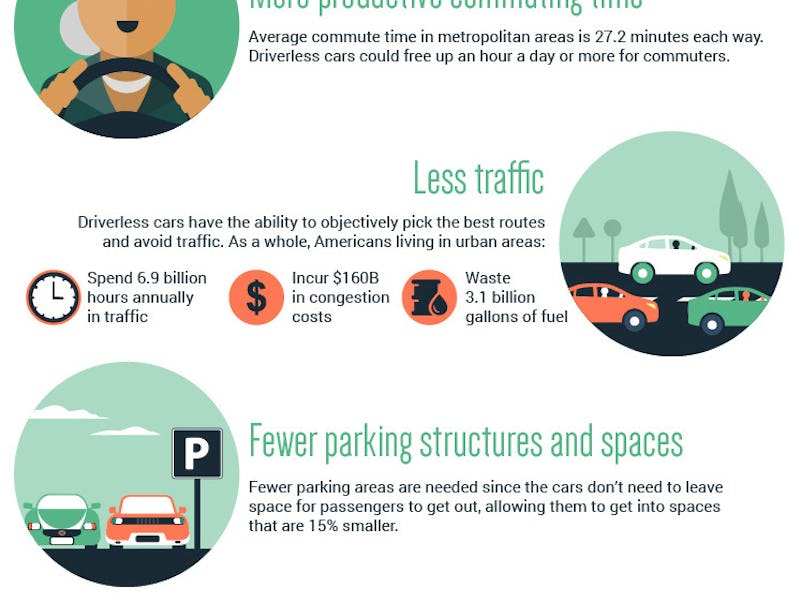Ready to start letting a robot drive you to work? A new infographic from Ohio University’s Online Master of Science in Civil Engineering program shows the surprising ways autonomous cars will change our lives, explaining how the technology will develop over the coming decades to prove indispensable.
“Over the next ten years, we’ll likely see driverless cars cruising alongside traditional autos on our roads,” the university said in a statement. “As the technology for self-driving cars is becoming more advanced and excitement grows, so do concerns and questions about their effect on the future of driving.”
It sounds like science fiction, but the first signs of full autonomy have already taken to the roads. Tesla’s Autopilot feature, a semi-autonomous system that drives the car along highways, uses the same sensors expected to be employed in fully autonomous cars further down the line. Similarly, automakers like Volkswagen and BMW have already announced plans to put the same mapping sensor technologies into their vehicles that will prove invaluable for later autonomous driving.
These developments have been a long time coming. The first modern cruise control was invented in 1950 by Ralph Teetor, and in 2003, automatic parking systems entered the commercial space with the launch of the Toyota Prius. These are not quite the same as full autonomy, but they laid the groundwork for an increased use of technology in driving.
These technologies will bring five key benefits: decreased accidents, reduced emissions, more productive commuting time, less traffic, and fewer parking spaces. To find out more about how, view the infographic below:
The infographic.
It’s an exciting time for the future of autonomy.
